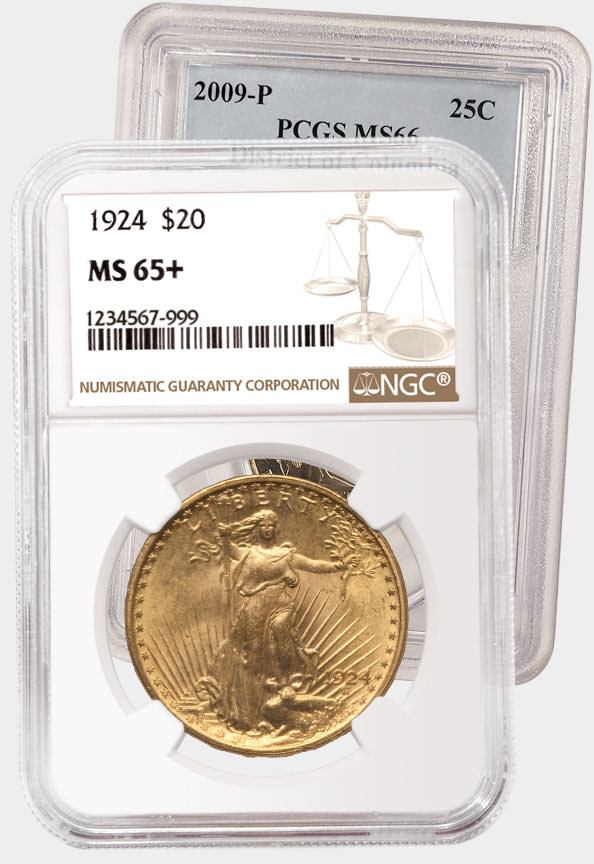USA Coin Album: Our Shrinking Coins
Posted on 5/13/2014
 Just as JFK’s stature as president has diminished over the past 50 years, so too has the size of his head on the half dollar. The same fate has befallen Lincoln, Jefferson, Roosevelt and Washington. To be fair, it’s hard to compare the portraits from 1938 Jefferson nickels and 1932 Washington quarters with those used today, since they’ve both been extensively revised to accommodate new reverse types. Still, the last usage of Felix Schlag’s 1938 bust in 2004 reveals that Jefferson, too, had lost his swelled head at the hands of US Mint sculptor/engravers some years previous.
Just as JFK’s stature as president has diminished over the past 50 years, so too has the size of his head on the half dollar. The same fate has befallen Lincoln, Jefferson, Roosevelt and Washington. To be fair, it’s hard to compare the portraits from 1938 Jefferson nickels and 1932 Washington quarters with those used today, since they’ve both been extensively revised to accommodate new reverse types. Still, the last usage of Felix Schlag’s 1938 bust in 2004 reveals that Jefferson, too, had lost his swelled head at the hands of US Mint sculptor/engravers some years previous.
Why were such changes made? The answer lies in shifting priorities in the face of dramatically rising mintages since 1960. The serious coin shortage of the early 1960s, which prompted the resumption of coining at San Francisco in 1965 and around-the-clock operations at all three mints, also highlighted the fact that dies were wearing out rapidly and being replaced too often to sustain such uninterrupted work. It was also obvious to anyone looking at our coins that the master hubs had lost considerable detail. This was particularly evident in the obverse of the Lincoln cent and both sides of the Jefferson nickel. The US Mint’s solution was to greatly reduce both the relief and size of central design elements for these two most troublesome coins. This work commenced as soon as the coin shortage abated in 1967 and Engraving Department employees finally had the time to address the problem.
First up was the cent. Since its debut in 1909 the Lincoln cent’s obverse had deteriorated so badly that the president’s beard no longer showed any whiskers. Instead, he seemed to have a massive tumor on his jaw. Repeated hub raisings and die sinkings had worn away all details of the bust and had even enlarged it slightly to occupy more of the coin’s field. Erosion of the master matrices had also driven LIBERTY and IN GOD WE TRUST up against the coin’s borders, and this led to more frequent chipping of the working dies. Even the date was moving ever closer to the border.
An entirely new master hub was created for the obverse of 1969’s cent coinage. This featured a smaller bust of greatly lowered relief. In addition, the date and lettering were given a broader and more delicate font to reduce the likelihood of die chipping and filling. They were also moved away from the border. Further changes were made to the cent’s master hubs, most noticeably in 1974, 1982, 1984 and 1992. Since 1992 the cent’s obverse has had a rather cartoonish appearance entirely unlike the sculpted work of Victor D. Brenner’s original. The Mint, however, has achieved its desired result of producing hundreds of thousands more coins per die and nearly eliminating notable die breaks. The only losers have been admirers of true numismatic art.
The Jefferson nickel underwent its first significant facelift in 1971 (the addition of designer’s initials FS in 1966 was made to the existing matrix). As with the cent, both the size and relief of the bust were reduced to extend die life, and the peripheral legends were moved away from the borders. Similar reductions were made to the coin’s reverse. Only minor changes were made over the next 15+ years, and it was not until 1989 that a series of radical relief reductions began to rob the Schlag portrait of all its vitality. Beginning in 1994 the Mint eliminated any real sense of three-dimensional art, while simultaneously shrinking the overall scale of the design within the coin’s field.
Similar changes have been made to the dime since the 1990s, and the bust of President Roosevelt has shrunken dramatically. This coin was always troublesome for the Mint, as both the date and IN GOD WE TRUST were too close to the border from the outset, often leaving these features somewhat shallow and indistinct near the coin’s rim. But it’s the mighty half dollar that has suffered the most from well-intentioned tinkering. The first copper-nickel-clad edition of 1971 had a greatly reduced portrait from the 1964-70 issues, but it was not until 1995 that the most egregious changes were effected. Kennedy’s bust was shrunk to its present size, and he was given the much maligned “spaghetti hair” that seems to have been a US Mint staple during that decade (this term refers to the noodle-like quality of the thick hair strands). Comparing a half dollar of 2013 to one dated 1964-70 is to weep for the lost artistry.
A backlash of sorts occurred with the quarter dollar, as collectors commented so unfavorably toward the spaghetti hair that George Washington had displayed since the 1990s. For the current America the Beautiful series the Mint created a new obverse master hub which drew upon John Flanagan’s original 1932 bust for inspiration. Naturally, the relief has to be lower for modern coinage needs, but gone now are the ludicrous noodles, and the portrait is much more satisfying.
David W. Lange's column, “USA Coin Album,” appears monthly in the Numismatist, the official publication of the American Numismatic Association.
Stay Informed
Want news like this delivered to your inbox once a month? Subscribe to the free NGC eNewsletter today!
